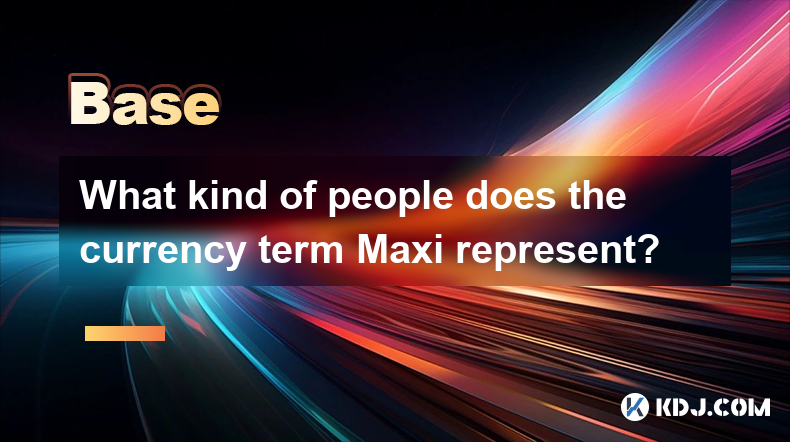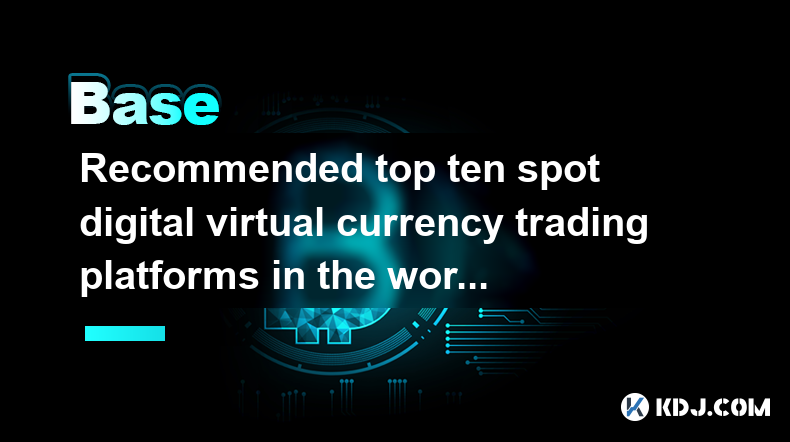-
 Bitcoin
Bitcoin $87,915.1013
4.01% -
 Ethereum
Ethereum $1,626.0336
3.05% -
 Tether USDt
Tether USDt $1.0002
0.03% -
 XRP
XRP $2.1225
3.25% -
 BNB
BNB $603.9394
2.51% -
 Solana
Solana $138.6104
1.03% -
 USDC
USDC $1.0000
0.01% -
 Dogecoin
Dogecoin $0.1612
4.65% -
 TRON
TRON $0.2431
-0.84% -
 Cardano
Cardano $0.6407
4.19% -
 Chainlink
Chainlink $13.4436
2.16% -
 Avalanche
Avalanche $20.5554
5.48% -
 UNUS SED LEO
UNUS SED LEO $9.0885
-2.49% -
 Stellar
Stellar $0.2597
7.37% -
 Toncoin
Toncoin $3.0010
0.25% -
 Shiba Inu
Shiba Inu $0.0...01257
1.68% -
 Sui
Sui $2.2420
6.60% -
 Hedera
Hedera $0.1711
4.33% -
 Bitcoin Cash
Bitcoin Cash $344.5133
3.21% -
 Polkadot
Polkadot $3.9101
1.15% -
 Hyperliquid
Hyperliquid $18.1893
5.38% -
 Litecoin
Litecoin $80.0892
5.05% -
 Bitget Token
Bitget Token $4.4777
1.97% -
 Dai
Dai $1.0000
0.00% -
 Ethena USDe
Ethena USDe $0.9994
0.01% -
 Pi
Pi $0.6362
1.91% -
 Monero
Monero $214.2887
-0.67% -
 Uniswap
Uniswap $5.4298
4.03% -
 Pepe
Pepe $0.0...07950
6.54% -
 Aptos
Aptos $5.1342
2.79%
What kind of people does the currency term Maxi represent?
Bitcoin Maxis believe in its dominance and security, often dismissing altcoins as risky or flawed, yet their views vary in intensity and impact the crypto community's dynamics.
Mar 29, 2025 at 08:49 pm

Decoding the "Maxi" in Cryptocurrency
The term "Maxi" in the cryptocurrency world doesn't refer to a specific demographic or group with shared characteristics like age or profession. Instead, it's a label used to describe individuals holding a strong, often unwavering, belief in Bitcoin's dominance and superiority over all other cryptocurrencies. They are fervent believers in Bitcoin's unique position as the original and most secure cryptocurrency. This belief often manifests as a dismissal or outright criticism of altcoins.
The Core Beliefs of a Maxi
Maximalists generally believe that Bitcoin is the only truly decentralized and secure cryptocurrency. They often point to its first-mover advantage, established network effect, and robust security as reasons for its unparalleled position. This isn't simply a preference for Bitcoin; it's a conviction that other cryptocurrencies are fundamentally flawed or ultimately unsustainable. They often cite concerns about altcoin projects' security, governance, or scalability.
The "Why" Behind Maximalism
The reasons behind maximalist sentiment are multifaceted. Some Maxis point to the inherent risks associated with altcoins, including the potential for rug pulls, scams, and regulatory uncertainty. Others emphasize Bitcoin's proven track record and its established position as a store of value, contrasting it with the volatility and perceived lack of utility in many altcoins. Many are drawn to Bitcoin's inherent scarcity, believing its fixed supply makes it a superior hedge against inflation.
How Maxis Engage in the Crypto Community
Maxis are active participants in online cryptocurrency forums and communities. Their engagement, however, is often characterized by a strong defense of Bitcoin and a critical stance towards altcoins. This can sometimes lead to heated debates and disagreements with those holding different views. While some Maxis engage in respectful discourse, others are known for their aggressive and dismissive rhetoric towards those who invest in or support other cryptocurrencies.
The Spectrum of Maximalism
It's crucial to understand that "Maxi" isn't a monolithic label. The intensity of maximalist beliefs varies widely. Some individuals may hold a strong preference for Bitcoin while still acknowledging the potential value of other cryptocurrencies. Others take a more extreme stance, believing that investing in anything other than Bitcoin is inherently risky and foolish. This spectrum makes generalizations about Maxis difficult, as individual beliefs and approaches can differ significantly.
Understanding the Nuances of Maxi Arguments
Maximalist arguments often center around technical aspects of blockchain technology, such as security, decentralization, and scalability. They frequently cite Bitcoin's superior hashrate, its proven resilience against attacks, and the strength of its community. Understanding these arguments requires a basic grasp of cryptocurrency technology and its underlying principles. However, it's important to remember that even within the technical arguments, there's often room for differing interpretations and opinions.
Maxis and the Future of Cryptocurrency
The role of Maxis in the broader cryptocurrency ecosystem is a subject of ongoing discussion. Some argue that their unwavering belief in Bitcoin drives innovation and contributes to the overall security of the network. Others contend that their often-aggressive rhetoric creates a hostile environment and discourages exploration of other potentially valuable projects. The long-term impact of maximalist sentiment on the cryptocurrency landscape remains to be seen.
Responding to Criticism
Maxis often face criticism for their sometimes uncompromising stance. Critics argue that their dismissal of altcoins prevents exploration of potentially beneficial technologies and innovations. They also point to the risk of missing out on opportunities presented by other cryptocurrencies. Maxis often respond by reiterating their belief in Bitcoin's inherent advantages and highlighting the risks associated with investing in less established projects.
The Psychological Aspect of Maximalism
The psychology behind maximalism is a complex topic. Some researchers suggest that confirmation bias, the tendency to seek out information that confirms pre-existing beliefs, plays a significant role. Others point to the emotional investment that many individuals have in Bitcoin, making it difficult to consider alternative perspectives. Understanding the psychological underpinnings of maximalism can offer valuable insights into the dynamics of the cryptocurrency community.
Maximalism and Investment Strategy
It's important to distinguish between holding a strong belief in Bitcoin and making investment decisions based solely on that belief. A well-diversified investment strategy typically involves considering a range of assets, including various cryptocurrencies. While some Maxis may choose to concentrate their investments entirely in Bitcoin, others might allocate a portion of their portfolio to altcoins, acknowledging the potential risks and rewards.
The Evolution of Maximalism
The intensity and prevalence of maximalist sentiment have fluctuated over time. During periods of significant market volatility, maximalist views may become more pronounced as investors seek refuge in the perceived stability of Bitcoin. Conversely, during periods of growth in the altcoin market, maximalist sentiment might become less prevalent. Understanding this dynamic is crucial for navigating the often-turbulent world of cryptocurrency.
Beyond Bitcoin: Exploring Other Maximalist Perspectives
While the term "Maxi" is most commonly associated with Bitcoin maximalists, similar sentiments can be found within other cryptocurrency communities. Some Ethereum enthusiasts, for example, hold strong beliefs in Ethereum's technological superiority and its potential to revolutionize various industries. These "Eth-Maxis," while sharing some similarities with Bitcoin Maxis, have different focuses and priorities. This highlights the broader applicability of the "Maxi" label beyond just Bitcoin.
Frequently Asked Questions
Q: Are all Bitcoin holders Maxis?
No. Many Bitcoin holders are open to the potential of other cryptocurrencies and don't necessarily dismiss altcoins entirely. Maximalism represents a specific, strong belief in Bitcoin's dominance, not simply ownership of Bitcoin.
Q: Is being a Maxi inherently negative?
Not necessarily. Maximalism can be a source of strong community support for Bitcoin, contributing to its security and development. However, overly aggressive or dismissive behavior can be detrimental to constructive dialogue within the broader cryptocurrency community.
Q: How can I differentiate between a Maxi and someone who simply prefers Bitcoin?
The key difference lies in the level of conviction and the degree to which other cryptocurrencies are dismissed. Someone who prefers Bitcoin might still acknowledge the potential value of other projects, while a Maxi often expresses a strong belief in Bitcoin's exclusive superiority.
Q: Is Maximalism a sustainable viewpoint in the long term?
The long-term viability of maximalism is uncertain. The cryptocurrency landscape is constantly evolving, and new technologies and projects could potentially challenge Bitcoin's dominance. The future will depend on technological advancements and market dynamics.
Q: What are the potential risks of being a Maxi?
The primary risk is the potential for missing out on opportunities presented by other cryptocurrencies. A solely Bitcoin-focused investment strategy might limit diversification and increase overall portfolio risk.
Disclaimer:info@kdj.com
The information provided is not trading advice. kdj.com does not assume any responsibility for any investments made based on the information provided in this article. Cryptocurrencies are highly volatile and it is highly recommended that you invest with caution after thorough research!
If you believe that the content used on this website infringes your copyright, please contact us immediately (info@kdj.com) and we will delete it promptly.
- Atok Partners with Bitgert to Advance Infrastructure and Advertising Economy in Web3 World
- 2025-04-21 23:00:13
- Pi Network (PI) Coin Could Be the Next Cryptocurrency to Launch an Exchange Traded Fund (ETF)
- 2025-04-21 23:00:13
- Strategy, the world's largest corporate Bitcoin holder, has purchased 6,556 BTC for $555.8 million
- 2025-04-21 22:55:13
- Bitcoin (BTC) Price Prediction: Arthur Hayes Hints at a Final Opportunity to Buy BTC Under $100K
- 2025-04-21 22:55:13
- Binance Adds ZORA to Spotlight Projects on Binance Alpha Alongside Other Names
- 2025-04-21 22:50:12
- Bitcoin (BTC) Price Prediction: BTC Surges Nearly 5%
- 2025-04-21 22:50:12
Related knowledge

Recommended top ten spot digital virtual currency trading platforms in the world in 2025
Apr 21,2025 at 05:15pm
Recommended top ten spot digital virtual currency trading platforms in the world in 2025 1. Binance As the world's premier cryptocurrency trading platform, Binance is known for its extensive trading pairs and efficient trading services. Its features include: High Liquidity : Binance has huge trading volumes, ensuring users can trade at the best pric...

Ranking of top ten virtual currency trading apps in the currency circle (the latest authoritative list in 2025)
Apr 21,2025 at 10:28pm
The top ten virtual currency trading apps in the 2025 cryptocurrency circle are listed as follows: 1. Binance Binance is one of the world's leading cryptocurrency trading platforms, known for its efficient trading system and extensive currency support. Binance's user interface is designed with simplicity and is suitable for beginners and profess...

What are the digital currency APP trading software in 2025? Ranking of the top ten digital virtual currency trading apps
Apr 21,2025 at 08:42pm
Ranking of the top ten digital virtual currency trading apps in 2025 1. Binance Binance continues to maintain its position as the world's leading digital currency trading platform in 2025. Its advantages include: Efficient trading volume : Binance has top trading volumes around the world, ensuring users can trade efficiently at any time. Diverse tra...

The top ten virtual currency trading app professional list of the three major virtual currency trading platforms in the currency circle in 2025
Apr 21,2025 at 11:21pm
Three virtual currency trading platforms in the currency circle 1. Binance As one of the world's leading cryptocurrency trading platforms, Binance has rapidly risen since its establishment in 2017 due to its huge trading volume and extensive user base. Binance's success stems from its rich trading pairs and high liquidity, but also from its cont...

Ranking of the top ten cryptocurrency trading apps in the currency circle in 2025
Apr 21,2025 at 08:49pm
Ranking of the three major virtual currency trading applications in the currency circle Binance: The world's leading cryptocurrency trading platform Binance has always been one of the pioneers in the cryptocurrency trading world. With its huge trading volume and a wide user base, it has become one of the most popular trading platforms in the world. ...

Top 10 best virtual currency trading platforms in the world ranked latest rankings for 2025
Apr 21,2025 at 10:00pm
Top 10 Most Popular Virtual Currency Trading Platforms in the World 1.Binance Binance is one of the world's leading cryptocurrency trading platforms, and is popular for its high liquidity and rich trading pairs. Binance supports over 500 cryptocurrencies and provides fiat currency deposit and cash withdrawal services. The platform interface is user-...

Recommended top ten spot digital virtual currency trading platforms in the world in 2025
Apr 21,2025 at 05:15pm
Recommended top ten spot digital virtual currency trading platforms in the world in 2025 1. Binance As the world's premier cryptocurrency trading platform, Binance is known for its extensive trading pairs and efficient trading services. Its features include: High Liquidity : Binance has huge trading volumes, ensuring users can trade at the best pric...

Ranking of top ten virtual currency trading apps in the currency circle (the latest authoritative list in 2025)
Apr 21,2025 at 10:28pm
The top ten virtual currency trading apps in the 2025 cryptocurrency circle are listed as follows: 1. Binance Binance is one of the world's leading cryptocurrency trading platforms, known for its efficient trading system and extensive currency support. Binance's user interface is designed with simplicity and is suitable for beginners and profess...

What are the digital currency APP trading software in 2025? Ranking of the top ten digital virtual currency trading apps
Apr 21,2025 at 08:42pm
Ranking of the top ten digital virtual currency trading apps in 2025 1. Binance Binance continues to maintain its position as the world's leading digital currency trading platform in 2025. Its advantages include: Efficient trading volume : Binance has top trading volumes around the world, ensuring users can trade efficiently at any time. Diverse tra...

The top ten virtual currency trading app professional list of the three major virtual currency trading platforms in the currency circle in 2025
Apr 21,2025 at 11:21pm
Three virtual currency trading platforms in the currency circle 1. Binance As one of the world's leading cryptocurrency trading platforms, Binance has rapidly risen since its establishment in 2017 due to its huge trading volume and extensive user base. Binance's success stems from its rich trading pairs and high liquidity, but also from its cont...

Ranking of the top ten cryptocurrency trading apps in the currency circle in 2025
Apr 21,2025 at 08:49pm
Ranking of the three major virtual currency trading applications in the currency circle Binance: The world's leading cryptocurrency trading platform Binance has always been one of the pioneers in the cryptocurrency trading world. With its huge trading volume and a wide user base, it has become one of the most popular trading platforms in the world. ...

Top 10 best virtual currency trading platforms in the world ranked latest rankings for 2025
Apr 21,2025 at 10:00pm
Top 10 Most Popular Virtual Currency Trading Platforms in the World 1.Binance Binance is one of the world's leading cryptocurrency trading platforms, and is popular for its high liquidity and rich trading pairs. Binance supports over 500 cryptocurrencies and provides fiat currency deposit and cash withdrawal services. The platform interface is user-...
See all articles






















































































